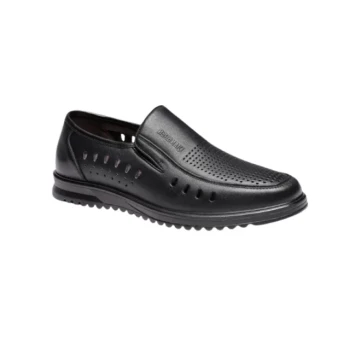When considering footwear, the sole is the foundation of performance and comfort. Polyvinyl Chloride (PVC) is a synthetic plastic polymer frequently used for soles due to its exceptionally low production cost and inherent flexibility. However, these benefits come at a significant cost to performance, as PVC soles are known for offering poor grip, especially in wet conditions, and have a tendency to become brittle and crack over time.
While PVC soles provide a highly affordable option for footwear, they represent a clear compromise in long-term durability and safety. Understanding how PVC stacks up against superior materials like rubber and polyurethane is key to making an informed choice based on performance rather than price alone.
The Core Characteristics of PVC Soles
To understand if a PVC sole is right for you, it's essential to examine its two defining characteristics: its cost and its physical properties.
The Primary Advantage: Cost-Effectiveness
The main reason PVC is used for shoe soles is its low cost. This material is inexpensive to manufacture and mold, which directly translates to more affordable footwear for the consumer. This makes it a common choice for budget-friendly or "fast fashion" shoes where price is the primary driver.
The Initial Benefit: Flexibility
PVC offers good flexibility right out of the box, meaning there is often little to no break-in period. This can contribute to a sense of immediate comfort for casual, light-use footwear.
Understanding the Trade-offs: PVC vs. Other Materials
No sole material exists in a vacuum. The weaknesses of PVC become most apparent when compared directly to other common materials used in modern footwear.
A Significant Lack of Grip
The most critical drawback of PVC is its poor traction. PVC soles tend to be slippery, a problem that is significantly worse on smooth or wet surfaces. Materials like rubber and polyurethane (PU) offer vastly superior grip and slip resistance, making them a much safer choice for daily wear.
The Durability Question: Cracking and Wear
While flexible at first, PVC can become brittle with exposure to temperature changes and repeated flexing. This leads to the material developing cracks over time, compromising the integrity of the shoe. In contrast, rubber is known for its durability, and polyurethane is recognized as a particularly hard-wearing and long-lasting synthetic alternative.
How PVC Compares to Rubber
Rubber is the standard for high-quality footwear for a reason. It provides an excellent balance of grip, durability, and comfort. While more expensive than PVC, rubber soles are the superior choice for any shoe where performance and longevity are priorities.
How PVC Compares to Polyurethane (PU)
Polyurethane is another synthetic polymer, but it generally outperforms PVC in every key area. PU soles offer good slip resistance, are lighter in weight, and are significantly more durable, making them a much better and more practical choice for everyday footwear.
Making the Right Choice for Your Needs
To choose the right sole, you must align the material's properties with your intended use and priorities.
- If your primary focus is the lowest possible price: PVC soles are a viable option for infrequent, light-use footwear where performance in varied conditions is not a concern.
- If your primary focus is all-around daily wear and safety: Opt for rubber or polyurethane (PU) soles for their superior grip, long-term durability, and overall comfort.
- If your primary focus is formal elegance for dry conditions: Traditional leather soles offer a classic look, but materials like Dainite rubber provide similar elegance with much better weather resistance.
Ultimately, understanding these material differences empowers you to invest in footwear that truly serves its purpose.
Summary Table:
| Aspect | PVC Soles | Rubber/PU Soles |
|---|---|---|
| Cost | Very Low | Higher |
| Initial Flexibility | Good | Varies |
| Traction & Grip | Poor, especially when wet | Excellent |
| Long-Term Durability | Prone to cracking and brittleness | Highly Durable |
| Best For | Budget, light-use footwear | Daily wear, performance, safety |
Don't compromise on quality and safety. As a large-scale manufacturer, 3515 produces a comprehensive range of high-performance footwear with durable rubber and polyurethane soles for distributors, brand owners, and bulk clients. Our production capabilities encompass all types of shoes and boots designed for superior grip and long-term wear. Contact us today to discuss your footwear needs and elevate your product line.
Related Products
- Wholesale Breathable Perforated Slip-On Loafers Custom Manufacturing
- Premium KPU Injection Athletic Style Safety Shoes
- Premium Flame-Retardant Waterproof Safety Boots and Shoes
- Wholesale Lightweight Tactical Boots with Dial Closure OEM & Bulk Orders
- Wholesale Safety Footwear Manufacturer for Bulk & Custom OEM Orders
People Also Ask
- What are slip-on loafers and how should they be styled for a business casual look?
- What makes the best loafers stand out for comfort? Discover the Engineering Secrets
- What is the importance of footwear in a business casual outfit? Elevate Your Professional Credibility
- What makes penny loafers a versatile choice for business casual wear? The Ultimate Guide to Stylish Professional Footwear
- How do moccasins differ from loafers? Choose the Right Shoe for Your Style



















